Reflecting on Muzaffar Ali's Mystical Journeys in Art
- Uma Nair

- Apr 20
- 3 min read

It was with immense pleasure that I curated Muzaffar Ali's Mystical Journeys in Art in January 2023. This exhibition was more than just a collection of works; it was a sensorial unveiling of Muzaffar's odyssey as a polymath. From paintings, collages, and sketches to designed objects, the collection traversed a tapestry of thoughts, articulating atmosphere and a sense of time through his unique lens.
Muzaffar Ali creates in the oasis of his own solitude. He breathes the Farsi poetry of Rumi, and this spiritual depth permeated the works displayed. He craves to create forms, like the leaves featured in the exhibition, that hold both an environmental and ethereal echo. That leaf series, part of the historical retrospective, brought to life Rumi's words: 'Be like a tree, and let the dead leaves drop'.

Pensive Portraits

Among Muzaffar's portraits, his depiction of his wife, Meera Ali, stood out. It was not merely an academic study but a contemporary creation melding expression, experience, and his love for the landscape. Hanging in the living room at the Kotwara Estate, the portrait serves as an icon, reflecting the artist's ideals more than just an individual likeness. Painted from both life and memory, Meera embodies Muzaffar's aesthetic values – a blend of expressionism and modernism, with an elongated neck and softly sculpted face hinting at a modernist mood. Her enigmatic gaze captured not just beauty but an urban sophistication and psychological depth. Created in a mood of tone and atmosphere, the portrait incorporated abstract autumnal elements, giving a face to feelings and defining a unique aesthetic.
Mirroring the Minimalist in Landscapes
Muzaffar's landscapes, showcased in the exhibition, are minimalist studies, often featuring distinct planar divisions created with loose, modulated strokes. These flat planes evoked a sense of floating realms. His landscapes told stories, mirroring the fragmentary nature of modern life and the ephemeral quality of our surroundings. He abandons traditional perspective to record his experiences directly, yet even large works retained a sense of spontaneity.

These moody edits are rooted in classical tradition but served as vehicles for artistic experimentation. They reflected key modernist trends: contemporary subjects, rejection of illusionism, and an emphasis on the act of painting. Confronted by environmental threats and urban expansion, Muzaffar fosters a revised understanding of landscape, seeking harmony between spatial, social, and environmental aspects of life. For him, landscape encompasses human interventions, creating rhythms that resonate.
The Amorphous Aura of Collages

Muzaffar's engagement with collage spans over three decades, born from Farsi poetry and the calligraphic intonations of scripture. His collages, which were part of the display, are ivory-tinted, muted manifestations where matter and texture meld into dynamic designs, embellished with poetic calligraphy for a spiritual echo. Works like "Exaltation" presented an austere abstraction, suggesting a transitory world of tranquility. He revels in informal compositions, using loose strokes and softened hues, abandoning traditional techniques to capture experiences subtly yet directly. These collages retained a soft spontaneity, subverting craft and intentionality. They wove the ecological and the spiritual, mixing sacred and profane, old and new, to create a surreal signature of visual fragments.
Form and Fervour in Sketches
Piquant, precise, and passionate – Muzaffar's sketches captured fleeting moods and reflective reveries. From architectural facades to beloved Salukis and horses, his pen-and-ink strokes conveyed spontaneity and speed. He immerses himself in the expressive power of colour and form, capturing an era of hope. In a sketch resembling a palatial haveli, we saw inventiveness and an eye for detail. His love for storytelling is a deeply impassioned element in his imagery. Even when sketching horses, he seeks unity and dynamic dialogue between subjects. While not purely figurative, his sketches revealed a discerning eye and an architectural mind, pushing artistic boundaries with a strong emphasis on form, structure, and composition.
Keeper of Secrets: The Horses
Muzaffar's love for horses stems from childhood Muharram memoirs. "Horses are keepers of secrets," he says. The apocalyptic horse of Imam Husain was one of his earliest icons. For Muzaffar, horses symbolize loyalty, the sun, knowledge, and life-giving forces. Whether depicting galloping horses in motion or a pair in moody reverie, his works exude the beauty, strength, and confidence that Muzaffar wants to capture. They recall equestrian myths and art history, like Picasso's Boy Leading Horse, sharing a subdued palette and restrained expressivity. A particularly poignant work displayed was Muzaffar's Rumi riding his horse through a misty landscape, extolling the brilliance of atmospheric expanse.
The Mystical Journeys in Art with Muzaffar Ali
A historical milestone, and I remain thankful to Vedica for their support in the curtain raiser. It was an honour to share the profound art of Muzaffar Ali.


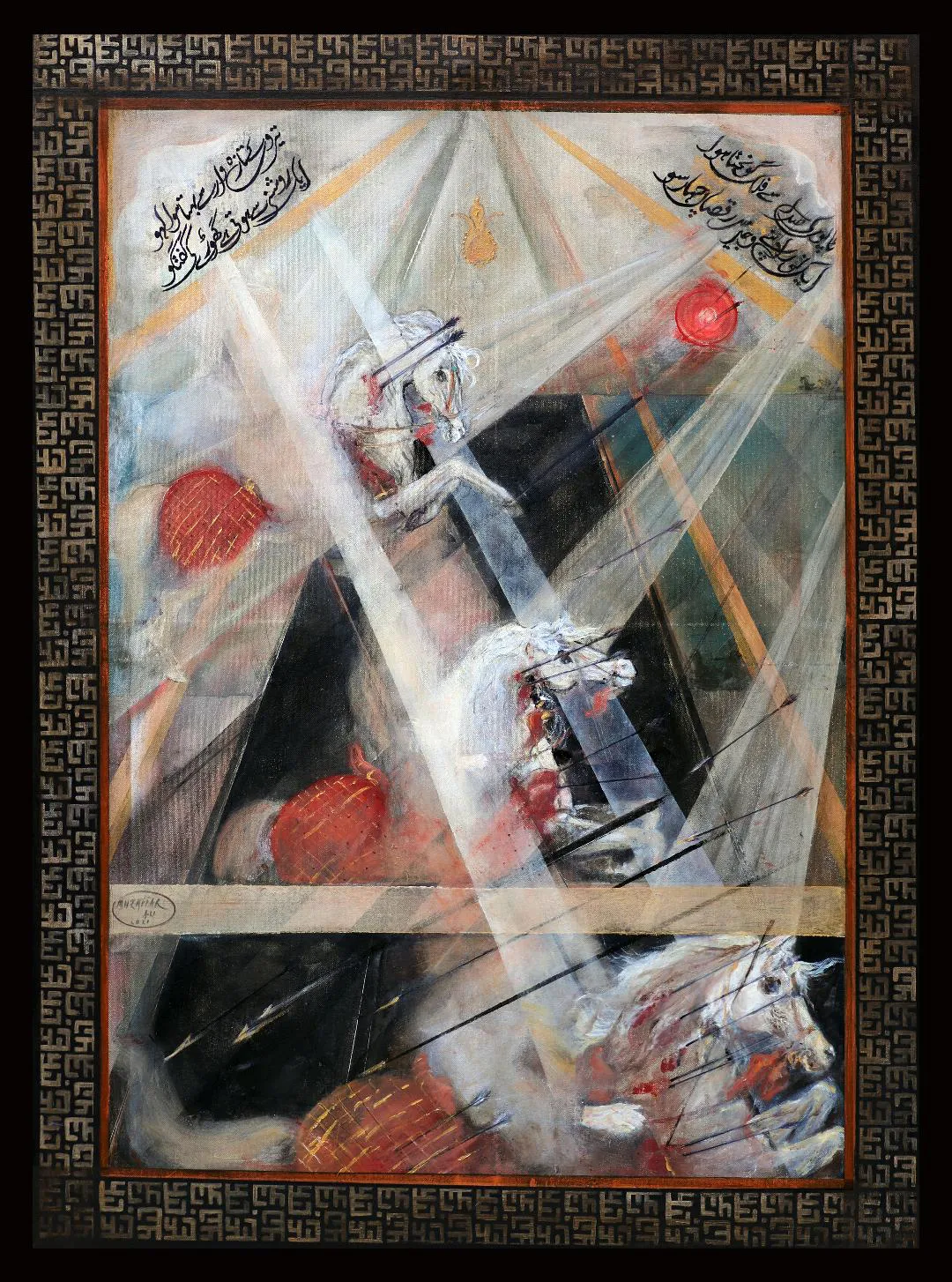
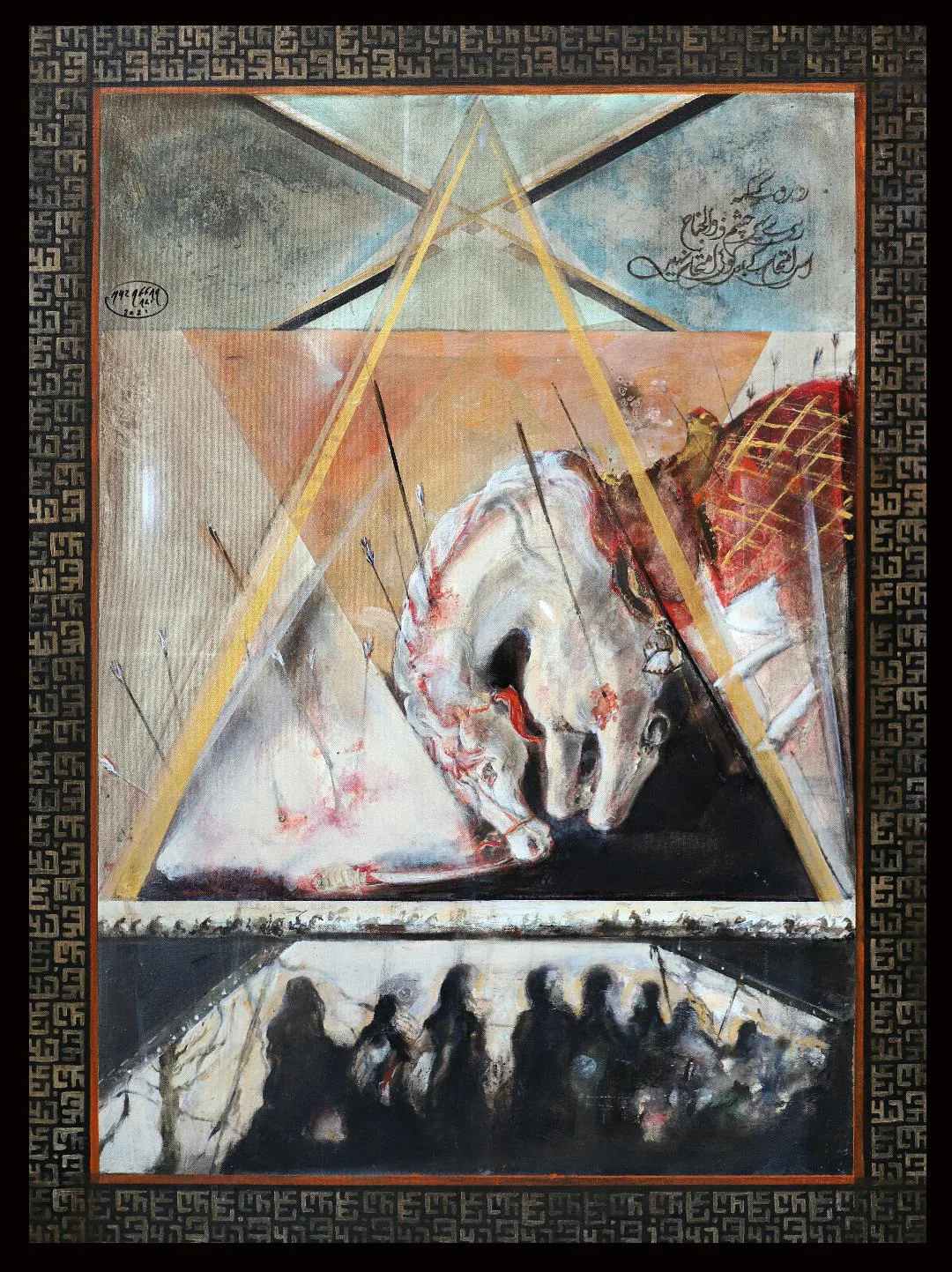
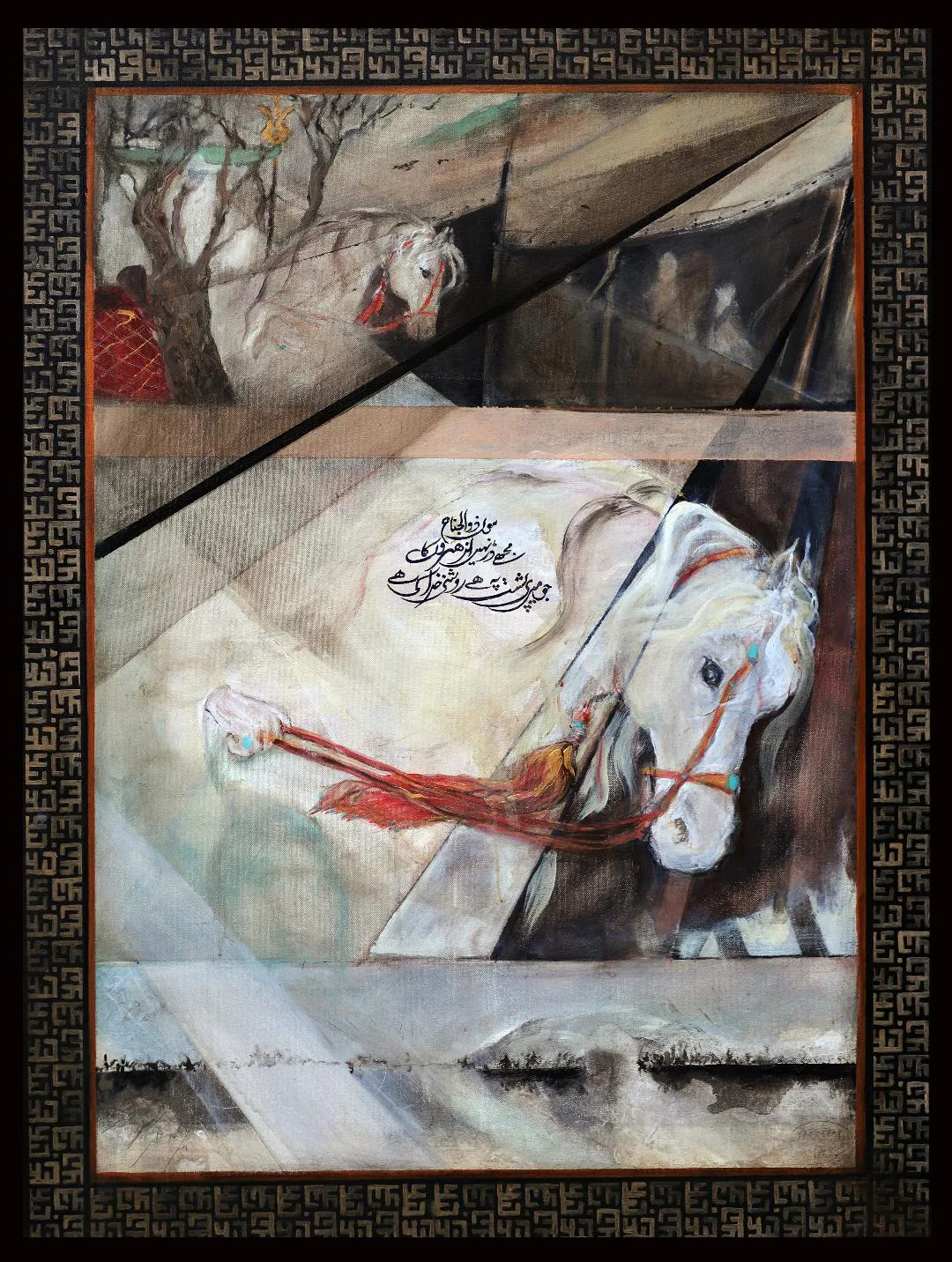
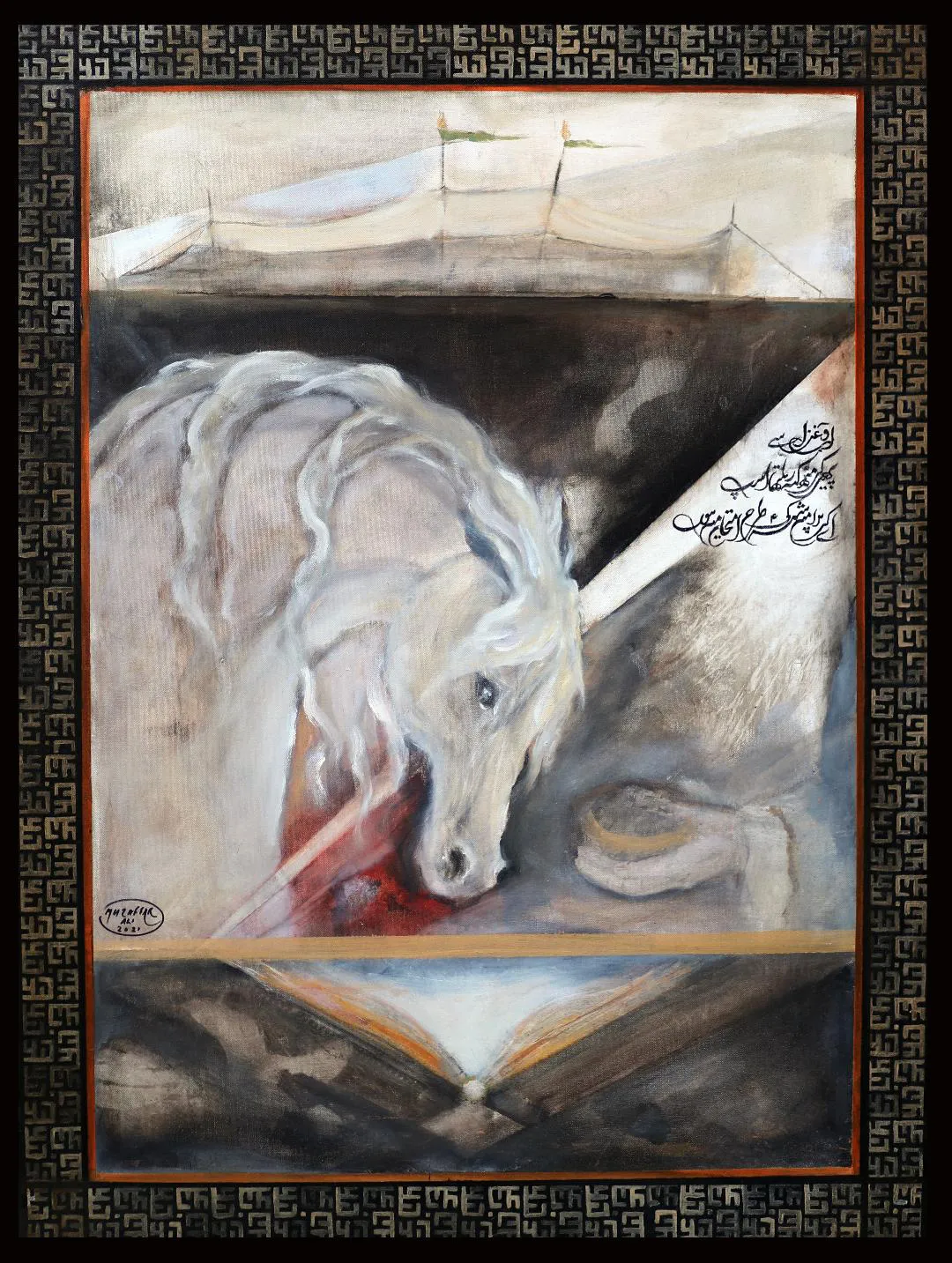
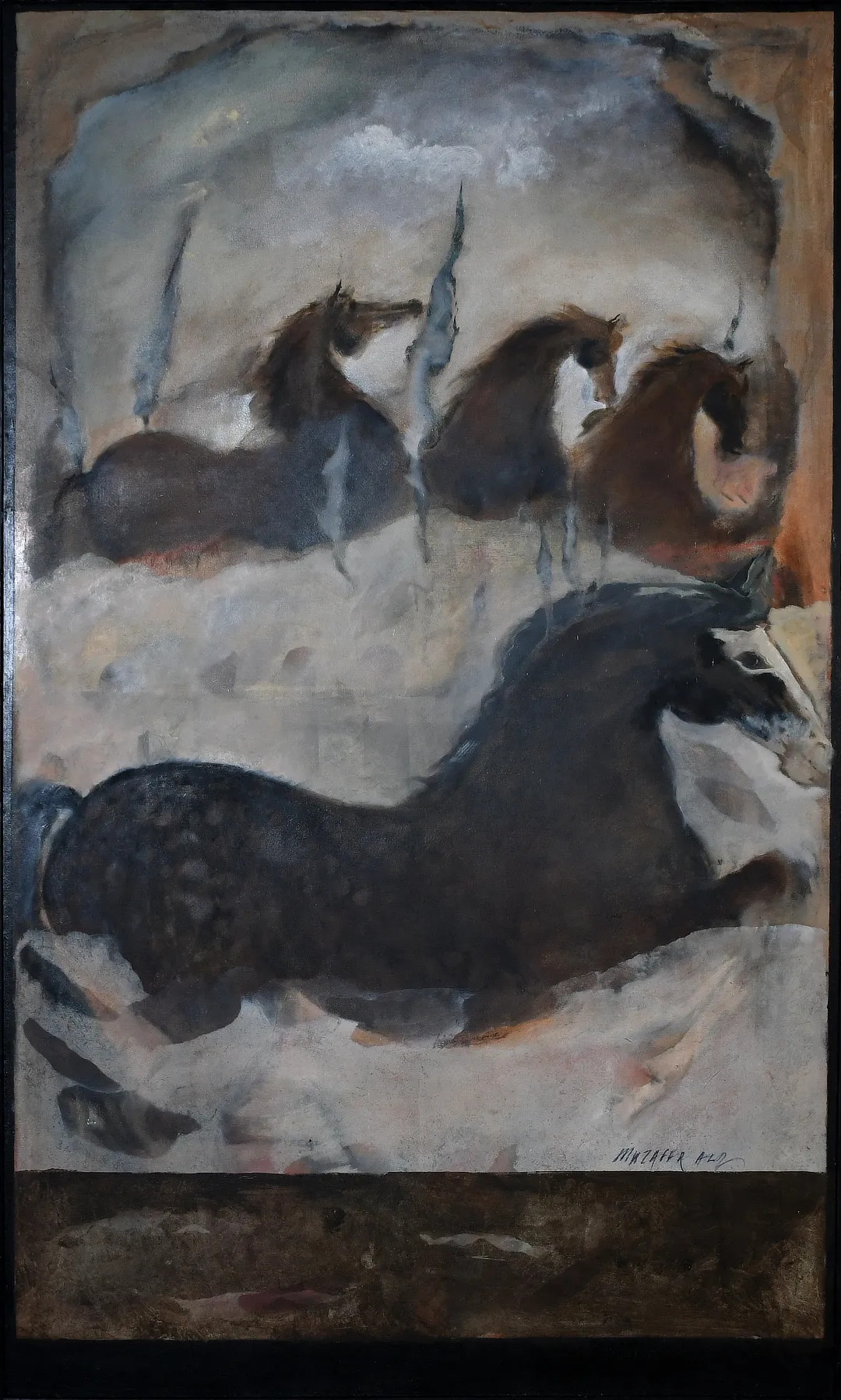
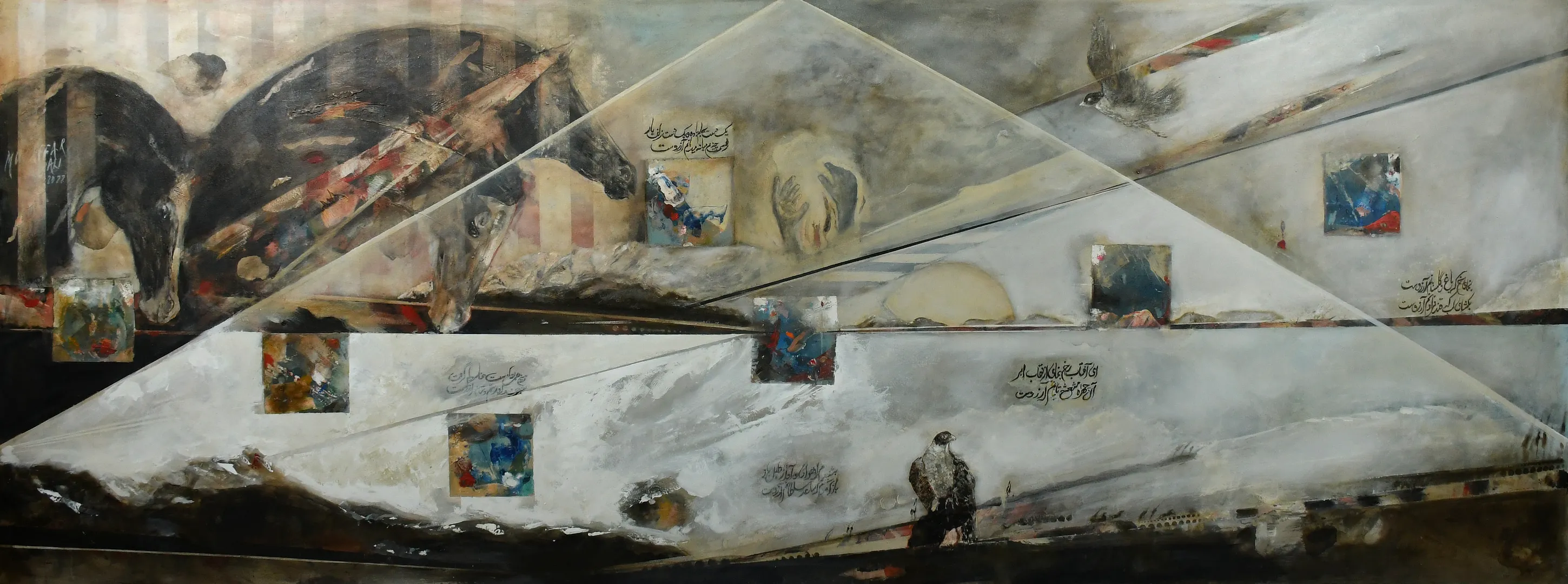
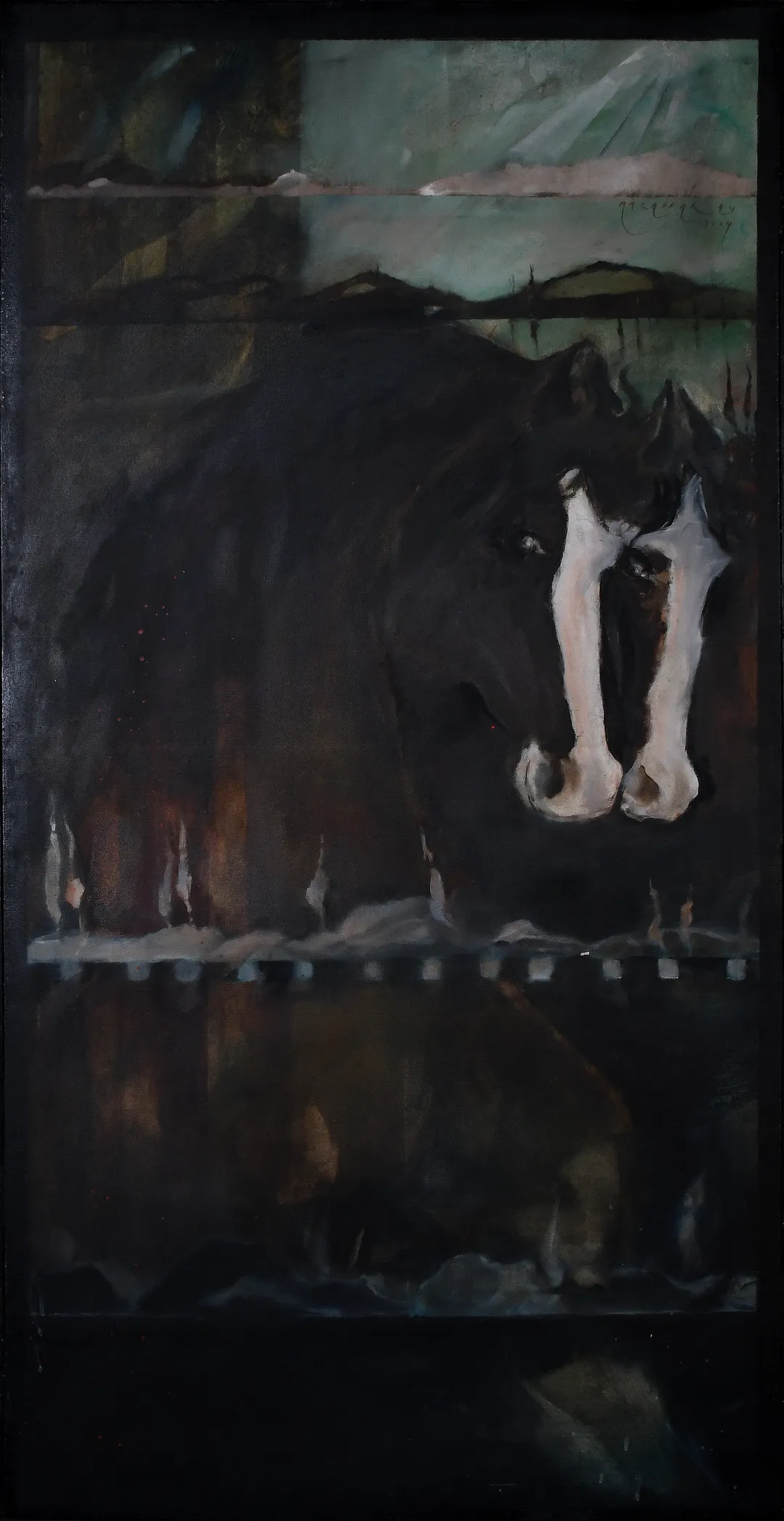
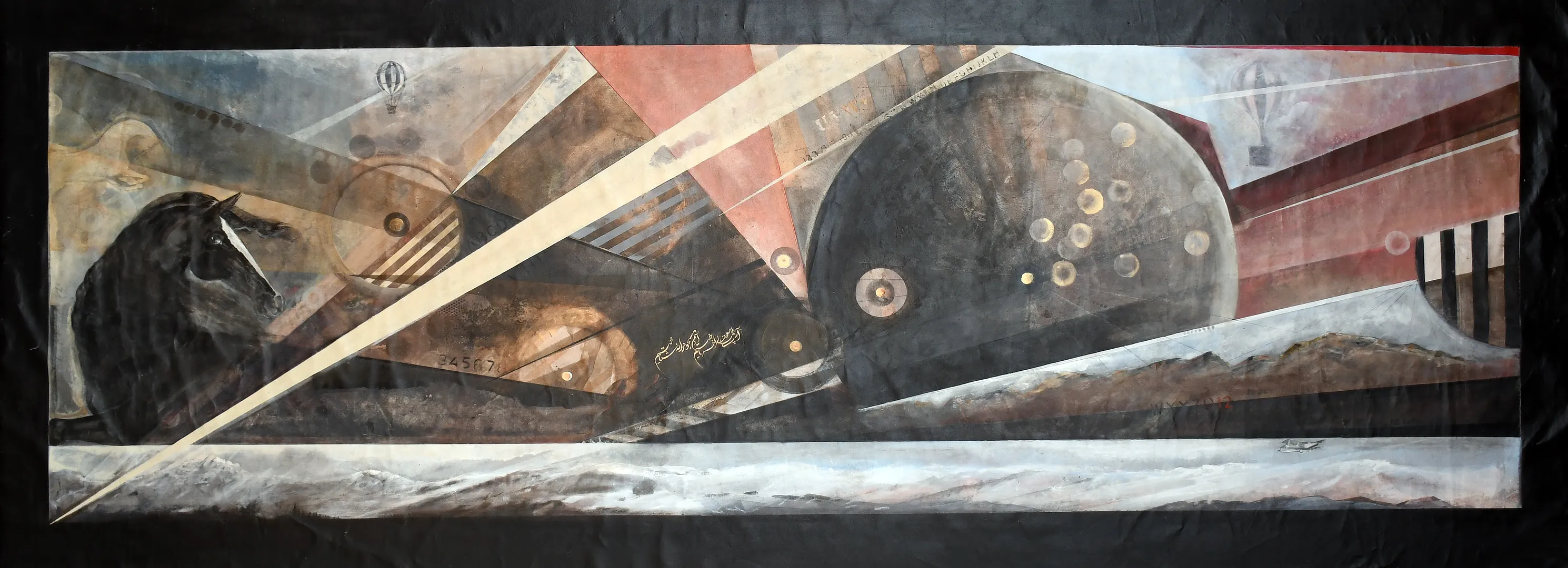
![Muzaffar Ali at Masjed-e Shah [Imam Khomeini Mosque], Isfahan in Iran.](https://static.wixstatic.com/media/5da3da_c5d01d36fea644c79ee041b3526fef82~mv2.jpg/v1/fill/w_980,h_490,al_c,q_85,usm_0.66_1.00_0.01,enc_avif,quality_auto/5da3da_c5d01d36fea644c79ee041b3526fef82~mv2.jpg)
I am fascinating about horses ,keeper of secret. How secretly mention the detailing.